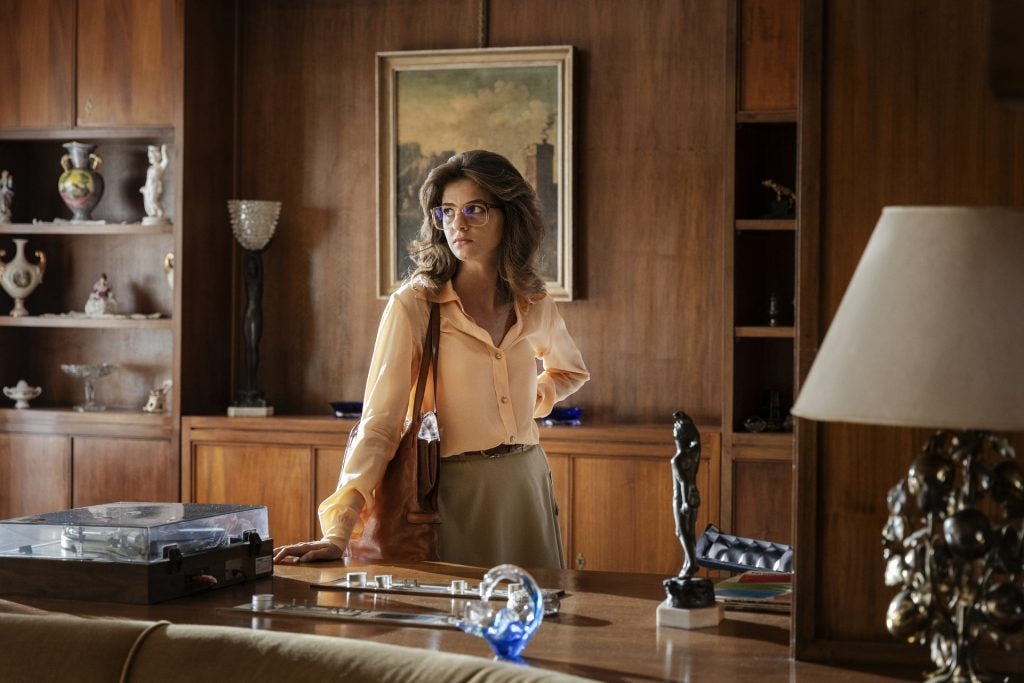My Brilliant Friend gave me lamp envy
Illuminating a multi-decades friendship. Plus, some spring looks inspired by Botticelli's "Primavera"
Shedding light on Elena Ferrante’s friendship epic
I am doing a massive rewatch of HBO’s1 My Brilliant Friend to gear myself up to watch the final season, which came out last fall (mild spoilers below).
The four seasons are based on Elena Ferrante’s Neapolitan book series, and depict the complicated friendship of two women named Raffaella ‘Lila’ Cerullo and Elena ‘Lenù’ Greco over 60 tumultuous years during societal upheaval in Italy. It covers so many things: the lack of viable opportunities for young women, the violent grip of patriarchy, ambivalence towards gender expectations, and the ties that bind us to where we come from. It’s about who gets to write their own narrative, and who dissolves in the margins. The show has incredible actors for every stage of Lila and Lenù, and the cinematography will have you looking up flights to Italy.
I don’t think this show got enough flowers when it was on, and I definitely don’t think enough has been written about its smart interior design. As I rewatch, I am struck by all the lamps in many scenes with Lenù. Maybe this is only perceptible to me — I am known to get distracted by good interior design even when it’s not *the point* of the scene. Time passes from 1950s milk glass and fringe lamps during her girlhood, to mid-1970s modern orb shapes when Lenù establishes a writing career and has the moneyed, book-filled apartment to accompany it.
You could argue that of course they’d have lamps — overhead lighting was less of a thing back in the day.2 However, I never think of the interior design for any of the other characters, and I think that is a privilege of Lenù’s class ascendance. For a character like Lila, home is a place of untold sorrow and violence — it’s hard to love her apartment in S2 because we want her to flee it. However, we can luxuriate in Lenù’s surroundings because the worst they can bring is a sense of ennui.
I also find it amusing that Lenù (an unreliable narrator) has so many lamps. Intertwined but on diverging paths, Lenù spends the series in thrall to her own undulating fascination, envy, and loyalty to the more talented, enigmatic Lila. She spends her entire life trying to illuminate her understanding of Lila, yet remains so in the dark about her.

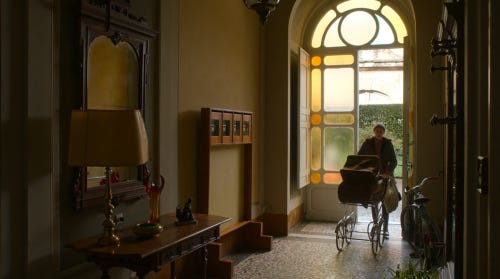


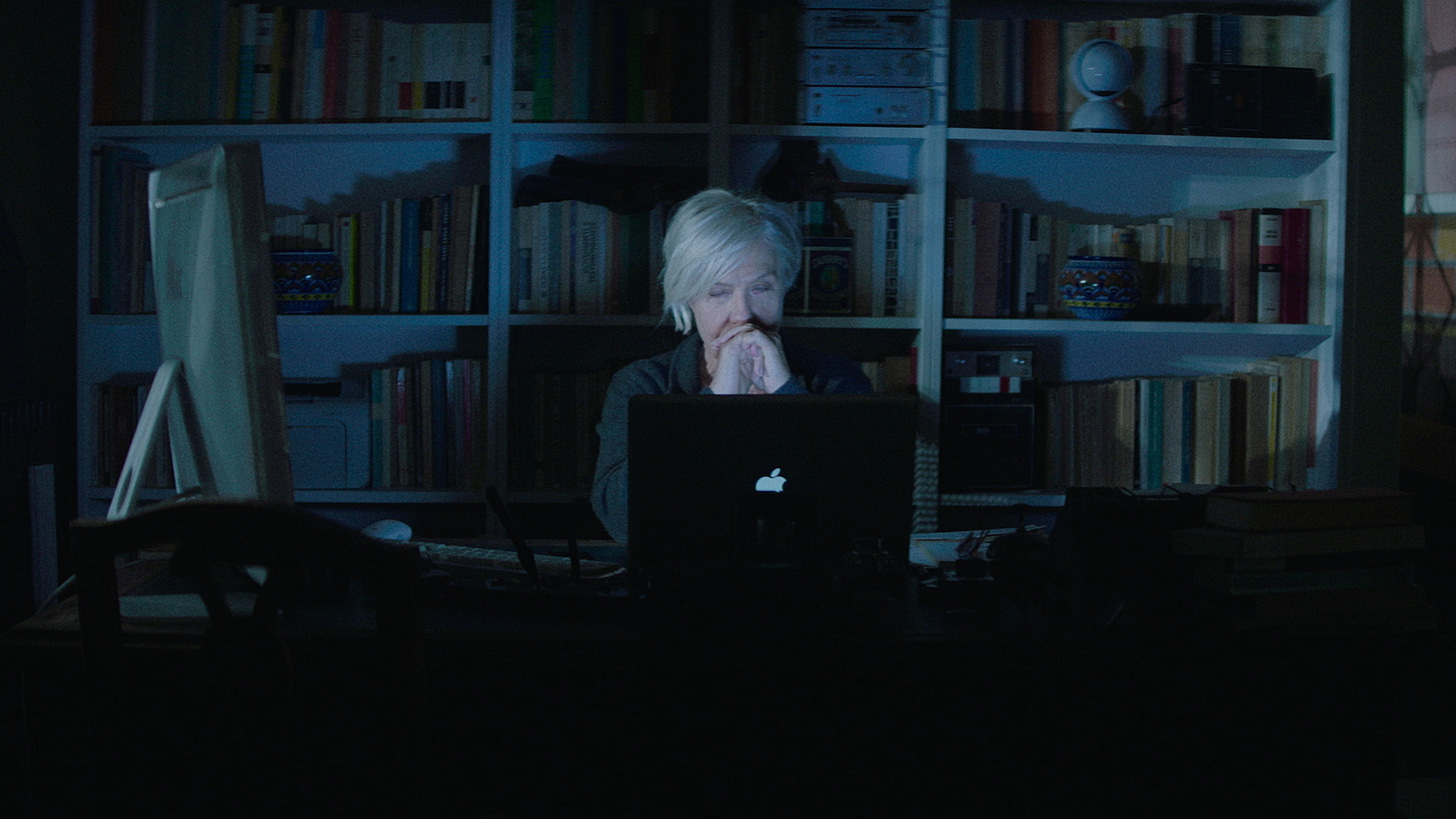
Below, some picks that fit the vibe:
(not sponsored or affiliate - just love)

Have you watched this show, and if so, what did you think of it? What other shows have great interior design?
Extended Reading:
An interview with the four main actors who play Lila and Lenù. I will never get over the casting of the two Lilas — it’s hard to believe they are NOT related irl | NY Times (gift link)
The brilliance of Max Richter’s score | Movie Music UK
How the set designer thinks about lighting for the show | Iguzzini
Searching for a replica of the landline phone on the show | Curbed
The dreamy filming locations of the show, including Naples and Ischia | Afar Magazine
Filming locations in Florence | My Flora Guide
The scents of Spring along the Arno …
On a related note, My Brilliant Friend uses composer Max Richter’s modernized arrangement of Vivaldi’s “Spring” to denote transition — characters being on the cusp of possibility. And of course, “Spring” – primavera in Italian – just reminds me of Sandro Botticelli’s 15th century painting of the same name. I was lucky enough to see “Primavera” in person a couple years ago at the Uffizi Gallery in Florence, and I hope to see it again later this year (if geopolitical turmoil does not prevent me from traveling).
I thought it would be fun to use this painting as sartorial inspiration for some Spring 2025 outfits. Similar to past posts I am going to include runway looks based on the characters above, but because I am a big secondhand advocate, I will include some pre-owned options (better for the environment and the wallet). Andiamo!
Mercury

Mercury: The figure in red is theorized to be the messenger god Mercury. According to Eugene Lane Spollen’s Under the Guise of Spring, the Mercury figure may have been based on Lorenzo di Pierfrancesco Medici, who would have been gifted this painting for his wedding, and Mercury’s upward gaze was a reminder to Lorenzo to rely on divine guidance in his life.
For sartorial inspiration, it’s all about a good drape or color regardless of fabric. I’d like to think that the messenger of the gods would appreciate a fashionable trench coat, so on the runway, we’ve got a sheer Dries Van Noten option and a sturdy leather Gucci trench. A fun secondhand option would be to reinterpret this as a robe.
The Graces
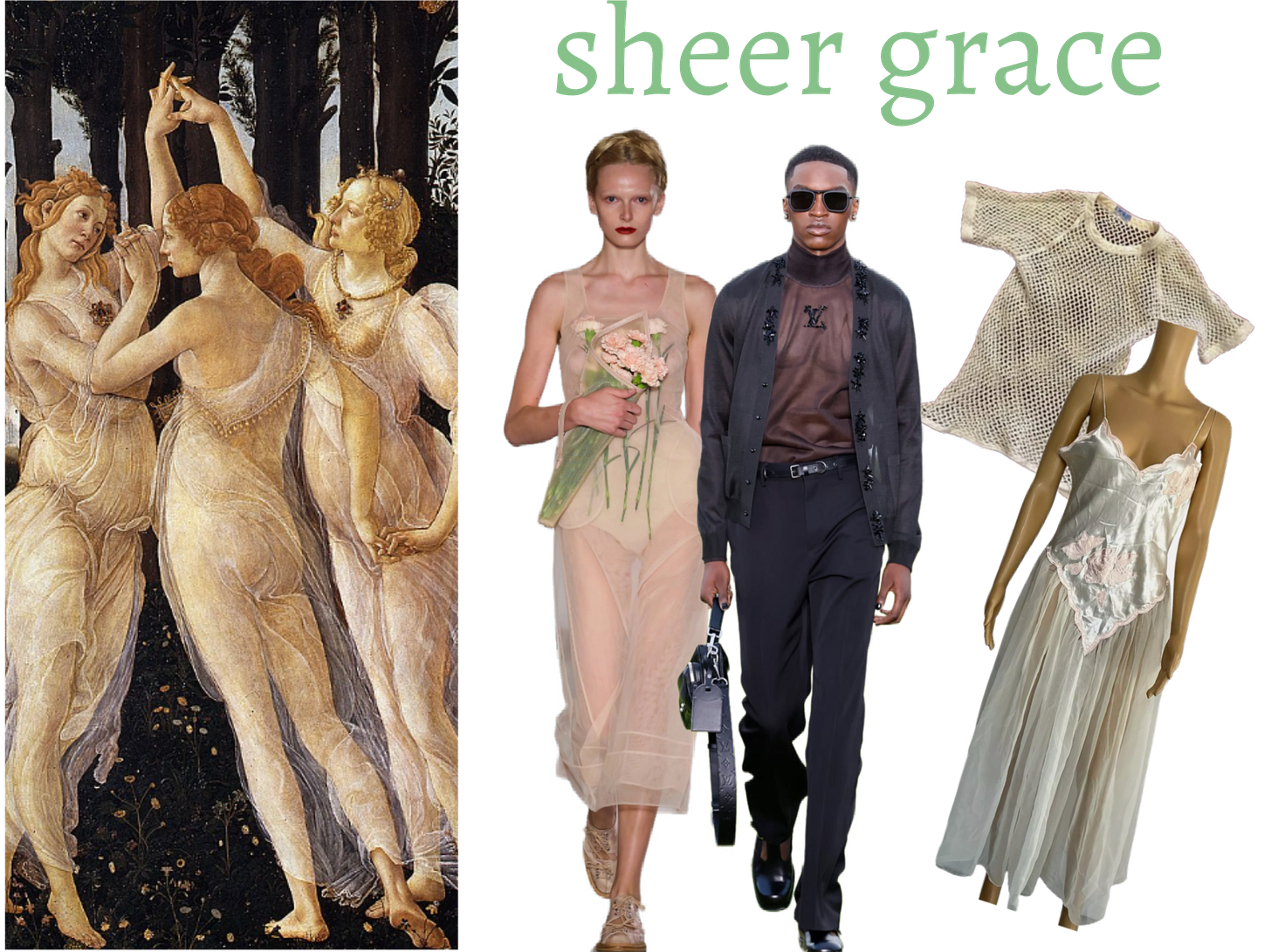
The Three Graces: The three dancing figures are the Three Graces – the embodiment of female virtues of Beauty, Chastity, and Love. There is a particular flow between the figures, according to Malcolm Bull in The Mirror of the Gods: How Renaissance Artists Rediscovered the Pagan Gods: “According to [Seneca], the Graces represent the giving, receiving, and returning of benefits, which passed from hand to hand between them. The eldest sister, Aglaia, has the honor of bestowing the gift, which she passes to Euphrosyne, and then to the youngest, Thalia.”
I’ve mentioned my love for Simone Rocha’s SS25 lineup in my Rococo fashion post, and this sheer look would fit right in, as would the Louis Vuitton top. As for secondhand, this vintage Victoria’s Secret nightgown is sooo glam.
Flora

Flora: I have a fascination with this figure — I make floral headbands in my spare time, and seriously considered naming this newsletter after her. Looks from Giambattista Valli and Sandy Liang could easily fit into Botticelli’s landscape. If you’re in the market for something new-ish, Needle & Thread has some gorgeous embroidered pieces (I wore a very similar dress to this one at my sister’s wedding) and there are many secondhand options on resellers. I found this white one for around $150.
Chloris and Zephyrus
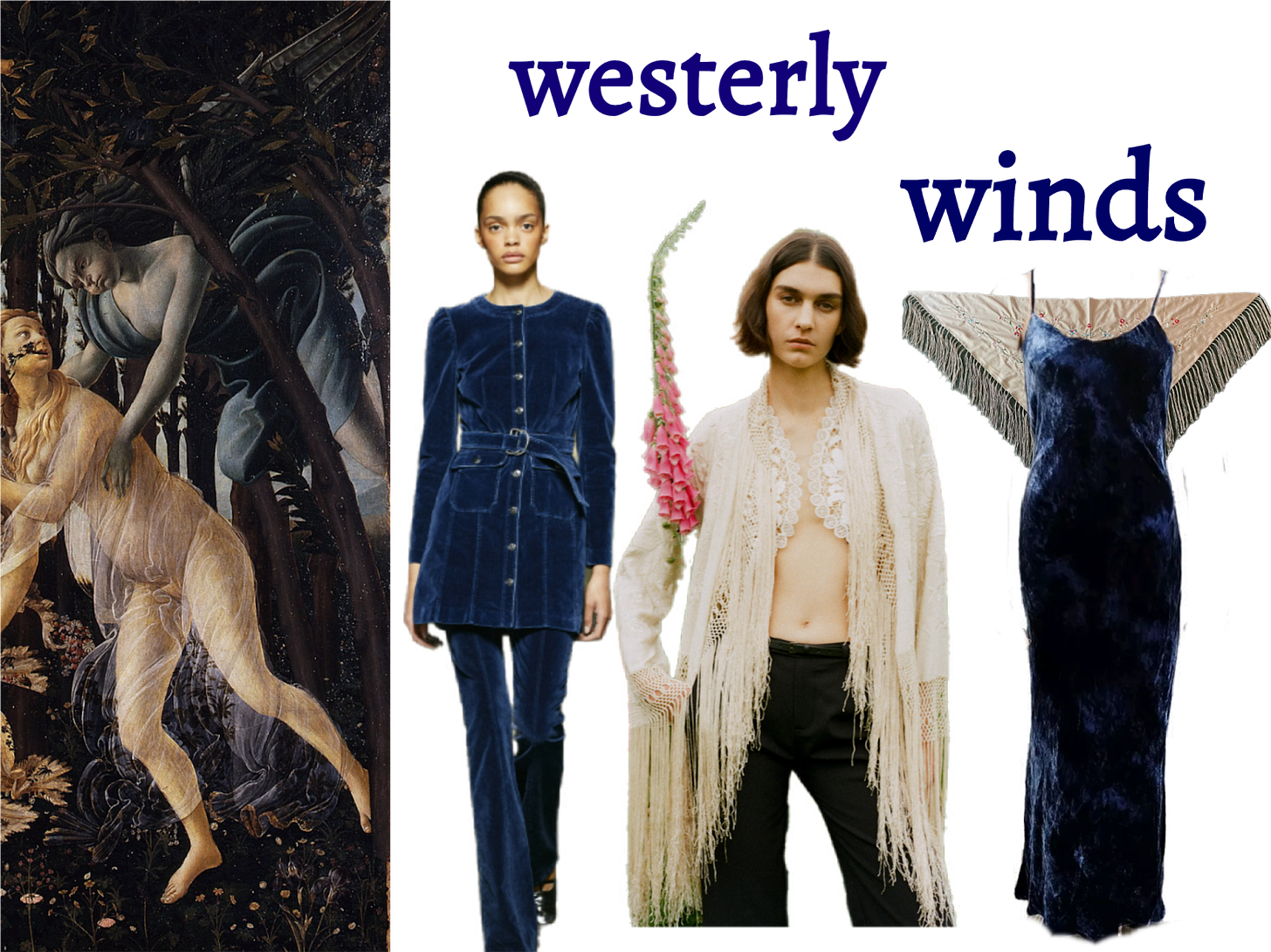
Chloris and Zephyrus: While this encounter looks menacing, the figures are meant to represent seeds and wind, aka the continuance of life. According to Bull in The Mirror of the the Gods, these two figures are linked to Flora:
“In Ovid’s Fasti, Flora exhales roses as she speaks, but in Botticelli’s painting it is Chloris who breathes out the flowers that form Flora’s dress. The device links all three figures, for the power of Zephyr’s breath forces the flowers from the corner of Chloris’ mouth towards Flora. There is no getting away from the redundancy here: Chloris and Flora are the same person shown twice. … the story of Chloris is just a flashback which explains how she became the queen of flowers.”
I think Cina a Sept’s velvet suit matches the rich blue of Zephyr’s tunic, while Sea Resort’s fringe-y top captures the movement of wind. You could combine these ideas in a vintage blue velvet dress and piano shawl.
Venus

Venus: The central figure in the painting is Venus, a goddess often depicted in Renaissance paintings of celestial and earthly matters. According to Spollen’s Under the Guise of Spring, “to fashionable and erudite Florentines, [the Christian] Mary and Venus were interchangeable.” Spollen also writes:
“The natural Venus is fully clothed and identified with fecundity and regeneration, nourishment, and well-being. … She was often called the ‘Queen of Heaven’ or ‘Star of the Sea’ in pre-Christian times, titles now associated with the Virgin Mary. The morning star, the planet Venus, is a common motif on the gowns of Botticelli’s Madonnas.”
For goddess fashion, look no further than draping linens and lace. Proenza Schouler’s lace looks good with a modern red vest, while Chloe offers a draped gown. For secondhand finds, a cape and a simple gown can provide intrigue and drama.
What paintings or works of art inspire your own sartorial influences?
Extended reading:
The Mirror of the Gods | Malcolm Bull
Under the Guise of Spring | Eugene Lane Spollen
A review for a recent film about “Primavera” | Arts Fuse
Was Botticelli’s “Birth of Venus” a fertility symbol? | ArtNet
Loose Buttons posts you may enjoy:
O-Rococo flow: sartorial inspiration from Fragonard’s works
Midge Maisel’s apartment journey
Weirdeval times in fashion
The symbolism of the green carpet in Severance
What do we wear to the revolution?
I used to work on their ads early in my career (and now work in user research), and it gave me untold joy to see all the memes about the name change back to HBO last week. The Max rebrand from a couple years ago always read like an exec’s disregard for focus groups.





